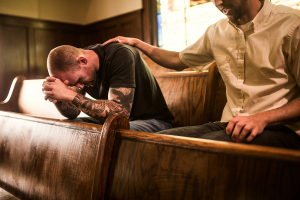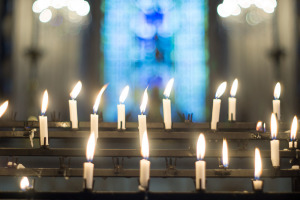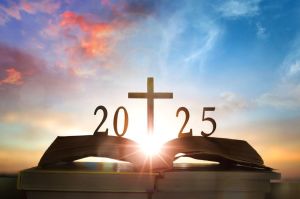Revelation 4: The destruction of our planet and an emerald rainbow

The rainbow is unquestionably a phenomenon of nature with incomparable splendor. As Kyle Hill, the science communicator and educator, said, “A rainbow is the product of physics working for your appreciation of beauty.”
However, the magnificence of the rainbow and its actual meaning have been lost to us. It’s most unfortunate when people think of the Rainbow; their minds automatically go to thoughts of Gay Pride. We’ve been conditioned to think this way. The Rainbow was never meant to represent sexual immorality any more than a Cross set afire was meant to represent White Supremacy.
The book of Genesis tells of the universal deluge God sent to destroy all human life except for Noah and his family. It was a terrible judgment, and no natural catastrophe has occurred on the same level since. The Bible says after Noah and the other seven souls with him emerged from the ark, Noah built an altar to worship God and made a blood sacrifice. When God saw it, he made the following promise:
“And the LORD was pleased with the aroma of the sacrifice and said to himself, ‘I will never again curse the ground because of the human race, even though everything they think or imagine is bent toward evil from childhood. I will never again destroy all living things. As long as the earth remains, there will be planting and harvest, cold and heat, summer and winter, day and night'” (Genesis 8:21-22).
The rainbow is a sign of God’s promise that he will never again destroy the earth as he did in a worldwide flood because of the way humankind rebels against his Maker. At the heart of the sign of the Rainbow is a message about God’s hatred for sin — his unwillingness to allow his order to be violated indefinitely. It is a sign of God’s covenant with the earth and its creatures — a covenant to which he binds himself to preserve the natural order from utter destruction.
The rainbow is a token of this covenant. The Lord says:
“I am giving you a sign of my covenant with you and with all living creatures, for all generations to come. I have placed my rainbow in the clouds. It is the sign of my covenant with you and with all the earth. When I send clouds over the earth, the Rainbow will appear in the clouds, and I will remember my covenant with you and with all living creatures. Never again will the floodwaters destroy all life. When I see the Rainbow in the clouds, I will remember the eternal covenant between God and every living creature on earth” (Genesis 9:12-16).
The rainbow has absolutely nothing to do with LGBTQ. Its hijacking is taking something holy and delightful and using it for something unholy and deadly.
In Revelation chapter 4, the apostle John was caught up before the throne of God in Heaven and said he saw another Rainbow — an Emerald Rainbow.
“And instantly I was in the Spirit, and I saw a throne in heaven and someone sitting on it. The one sitting on the throne was as brilliant as gemstones — like jasper and carnelian. And the glow of an emerald circled his throne like a rainbow.”
Remember what John sees in heaven precedes a period of Great Tribulation that God is about to unleash on the world in judgment before Christ’s return to earth. This is what John means when he says in verse 5, “lightning and thundering,” proceed from the throne. Chapters 6-19 of Revelation are the prophetic record of God’s pouring out judgment after judgment in the last days. These apocalyptic judgments to come will ravage the planet.
So, what’s this emerald rainbow?
Clarence Larkin, in The Book of Revelation, notes the differences between the rainbow of Noah’s day and the one John saw. Noah’s Rainbow was semi-circular, and John’s was circular. Larkin wrote:
“In this world, we see only half a Rainbow or the half of things; in heaven, we shall see the whole of things … The difference between Noah’s Rainbow and the one around the throne of God is that Noah’s is composed of the seven primary colors, red, orange, yellow, green, blue, indigo, and violet, while the one around the throne of God is emerald. What does this circular green Rainbow signify? It signifies that God is a covenant-keeping God and that his promises to this earth shall be fulfilled. Even though he is about to bring great judgments upon it, he will not destroy it, but it shall pass through those judgments safely. He will redeem it and bless it until its hills, valleys, and plains shall teem with green verdure [healthy green foliage], fruitful orchards, and bountiful vineyards of the long Millennial Day that is to follow these judgments.”
For many years now, there has been considerably fearmongering about a man-made disaster wiping out all of civilization. After America dropped nuclear bombs on Japan and the superpowers’ escalation of atomic weapons, the primary fear during the 60s and even into the 80s was the world facing nuclear annihilation. Remember how schoolchildren were trained to seek cover under their desks in the event of a nuclear attack? A lot of good that would have done!
Today, other fears are prominent such as meteorites slamming into the earth and destroying all life. This is the theme of the popular movie, “Don’t Look Up,” starring Leonardo Dicaprio and Jennifer Lawrence.
The most prominent fear today seems to be Climate Change. A recent study by the World Wildlife Fund stated the human race is plundering the planet so badly that we only have until around 2050 before the world can no longer support life.
Nevertheless, the Bible doesn’t support the notion that a man-made disaster or a natural catastrophe will ultimately end the world. God is on his throne and in total control.
“The earth is the Lord’s, and everything in it. The world and all its people belong to him” (Psalm 24:1-2), wrote the Psalmist.
No one but God will “push the button” to destroy this world. Moreover, God’s covenant with the earth to preserve it from utter destruction would be broken if the Lord, who controls his creation, would allow a natural disaster to destroy it, making it utterly unfit for life.
Of course, God will destroy the present heaven and earth with fire in the end. 2 Peter 3:5-7 reads:
“They deliberately forget that God made the heavens long ago by the word of his command, and he brought the earth out from the water and surrounded it with water. Then he used the water to destroy the ancient world with a mighty flood. And by the same word, the present heavens and earth have been stored up for fire. They are being kept for the day of judgment when ungodly people will be destroyed.”
This verse stimulates considerable theological debates about whether the old heaven and the old earth are discarded forever, and God provides brand-new heaven and earth, or whether the new heaven and the new earth are the old heaven and earth refined and restored.
Writing for The Gospel Coalition, I think Matt Emerson addresses this issue best. He writes:
“While some in recent years have argued for what amounts to a complete destruction of the current creation (e.g., John MacArthur in his commentary on 2 Pet 3), the historic Christian position is that the new creation is a renewal of the old creation, in which Christ’s work and particularly his death and resurrection remove the effects and source of sin and thereby bring restoration not only to human beings but to all that God has made. This accords with the biblical data, including an affirmation of creation’s goodness (Gen 1:3, 10, 12, 18, 21, 25, 31) and God’s care for it, the scope of redemption encompassing all that was affected by the fall, the prophetic hope that it is the current created order that will be restored in the new creation (e.g., Isa. 65:17ff.)….”
This view, I believe, best dovetails with the promises contained in Noah’s Rainbow and the symbolism found in John’s Emerald Rainbow. God has solemnly committed himself never to permit the earth’s complete obliteration. He is either literally or figuratively going to burn away all sources of sin, all acts of evil, all that offends his created order and restore this earth to his original intentions, similar to the Garden of Eden.
Several years ago, Neil Howe and Bill Strauss wrote a book titled 13th Gen: Abort, Retry, Ignore, Fail? The book is about America’s 13th generation, born between 1961 and 1981. Today these people are typically categorized as Generation X. Howe and Strauss say that this generation was the first whose mothers took pills not to have children, the first to go through the divorce revolution, and the first to go to school when schools stopped teaching traditional curriculum. As a result, say the authors, Generation X has a unique combination of optimism and pessimism about life.
“They’re individually optimistic and collectively pessimistic,” wrote Neil Howe. “I liken them to a group of skydivers hurtling to the ground with only one parachute among them, but each one expects that he will get it.”
Interestingly, the Bible is marked by an incredible combination of optimism and pessimism. The Scripture is definitively pessimistic about the human race’s ability to save this broken world. Those without Christ and failing to walk in his ways are hurtling toward a horrible end. But the Bible is optimistic about the future of believers who love him and obey his commandments. Christ is coming again for his own and will establish His Kingdom here on the earth, where they shall reign with him.
For everyone who receives Christ, there is a parachute. For this planet, the everlasting covenant of Noah’s rainbow and the promise of the Emerald Rainbow remain.
Rev. Mark H. Creech is Executive Director of the Christian Action League of North Carolina, Inc. He was a pastor for twenty years before taking this position, having served five different Southern Baptist churches in North Carolina and one Independent Baptist in upstate New York.




























